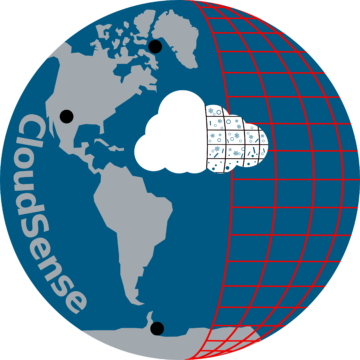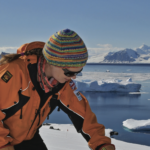SOC is a project of the NERC CloudSense Programme
The biases observed in climate models over the Southern Ocean in surface radiation and sea surface temperature are larger than anywhere else in the world. They have a fundamental impact on the ability of these models to predict global climate. Evidence suggests that errors in the representation of the mixed phase clouds found over the high latitudes of the Southern Ocean are responsible for these biases. Southern Ocean Clouds (SOC) Is a major project that aims to investigate high latitude mixed phase clouds and their representation in climate models by:
i) Investigating the source and composition of the cloud forming nuclei responsible for these clouds
ii) Investigating the cloud microphysical processes –such as secondary ice production –that are important in these mixed phase clouds
iii) Using the new observations to identify and partition the various sources of aerosols found in this region
iv) In conjunction with our new field data, developing new microphysical parameterisations for use in climate models
v) Conducting a series of global-scale model experiments, using our new microphysical parameterisations, to assess the impact of Southern Ocean clouds on the global climate system and so reduce the climate sensitivity due to clouds.
Objectives
To address our overall aims, we have a number of specific objectives:
-
- Identify the composition and sources of cloud-forming nuclei that play a major role in the formation of clouds in the Southern Ocean.
- Identify the detailed processes involved in secondary ice production (SIP) in clouds over the Southern Ocean and the role that SIP plays in cloud formation.
- Use the detailed observations of aerosols made during this project to validate and improve models of aerosol production over the Southern Ocean.
- Improve the representation of clouds in climate models of the Southern Ocean by developing and evaluating parameterizations based on our observational findings
- Evaluate the impact of these new parameterizations on model simulations of the climate system.
For more information and project updates visit: https://cloudsense.ac.uk/ or follow us on Twitter: @CloudSenseNERC


1. Investigating the source and composition of the cloud forming nuclei responsible for these clouds
2. Investigating the cloud microphysical processes –such as secondary ice production –that are important in these mixed phase clouds
3. Using the new observations to identify and partition the various sources of aerosols found in this region
4. In conjunction with our new field data, developing new microphysical parameterisations for use in climate models
5. Conducting a series of global-scale model experiments, using our new microphysical parameterisations, to assess the impact of Southern Ocean clouds on the global climate system and so reduce the climate sensitivity due to clouds.
26 November, 2024
A project looking at how clouds affect climate change in Antarctica starts its second year of field research this month. The Southern Ocean Clouds (SOC) project, which is part of …
19 October, 2023
The Antarctic field season has started, with over 600 people beginning the journey South to work on over 60 projects on station and in the field. The season of work …
11 May, 2023
The 2022/23 Antarctic field season has ended, marking the conclusion of another successful year of scientific exploration in one of the world’s most remote and challenging environments. This field season, …
3 February, 2023
A team of scientists are currently conducting a major experiment over the Southern Ocean that will help to improve climate modelling. The Southern Ocean Clouds project team are performing several …
Airborne instrument capability
The largest British Antarctic facility is a centre for biological research and a hub for supporting deep-field science.
Bird Island Research Station is an important centre for research into bird and seal biology. Lying off the north-west tip of South Georgia, Bird Island is one of the richest …
There is no excerpt because this is a protected post.










